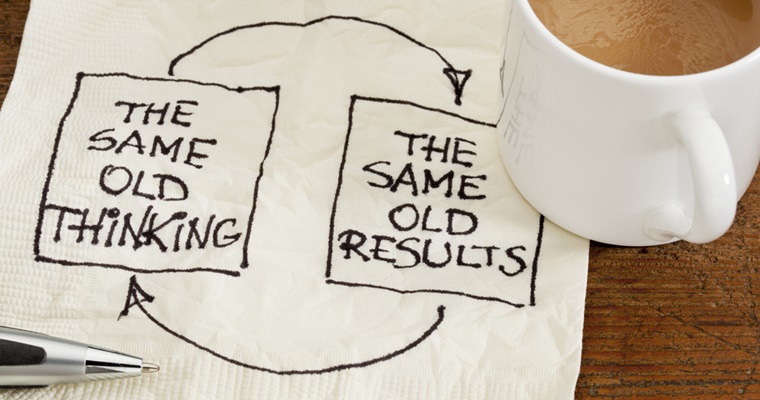Online marketing success is becoming trickier to find as more and more companies start to get creative, advanced, and above all else, personal. Being able to personalize someone’s experience, whether that be through personalized content, homepages, deals, coupons, or more, is crucial. You want to set yourself apart from the competition and connect with your audience, and what better way to do that than spend time personalizing? Sounds like a great idea; however getting there can be tougher.
This is where mindset segmentation comes into play. It’s one way to help you personalize messages coming from your brand, and it can work for any company looking for an avenue to get more connected with their audience.
So then, just what exactly is mindset segmentation? Glad you asked.

What is Mindset Segmentation?
It’s important to understand that consumers now expect to get personalized information and be treated as more than just a potential buyer. For brands, this means segmenting their audience so they can create different messages for different people. Kellie Cummings was one of the first to use the term ‘mindset segmentation’ and explained how it works very clearly in this article. The article states:
“While marketing segmentation distinguishes people according to their buying behaviors, mindset segmentation identifies people based on their emotional desires and expectations […] Simply put, there’s more to customers than their willingness to purchase products. When employees see the human side of customers, they can develop communications that sustain customers’ trust.”
So again, what exactly is mindset segmentation? It means putting your audience into different segments based on their mindsets, and not their mindsets about your product or brand—just their mindsets in general.
According to a Marketing Profs article, there are five major categories of audience segment attributes of mindset segmentation:
- Beliefs. Find out what your audience believes in (community, friends and family, any activities, ways of thinking, etc.) and then see how your brand can coincide with those beliefs and values.
- Hopes and fears. You can think of this in relation to your industry, but try to think more big picture and talk with your loyal customers to understand what makes them feel fulfilled vs. disappointed.
- Emotional needs. You probably know by now that appealing to emotions is a great marketing tactic, but you have to know what emotional needs are at play in the first place. The need for security and self-esteem can be huge.
- Expectations. What is it that gets someone to trust someone else? This is where you can learn what someone thinks is unethical or what social constructs they expect in general and therefore also when they get to know your brand.
- Brand perceptions. This one may seem like it doesn’t fit in with the others, but analyzing how someone might describe your company to others still tells you about their personal values.
This type of thinking is now more important than ever because of the way the internet has changed the buying cycle as well as the mindsets of consumers in general. Social media, for example, puts a huge focus on the individual, and Google+ took this one step further by making it easy for individuals and brands to segment their audiences through Circles. Mindset segmentation is the next step in the process—once you have thought about the characteristics above, it’s time to create a message that really resonates.
Extra: Keep in mind that you may find your audience differs on several of these points. For example, some of your audience may really value activities happening in their community, while others may prefer to stay home online. This is where creating personas comes into play, which you can learn more about here in a past SEJ post.
So How Do You Get Started with Mindset Segmentation?
When it comes down to it, the verdict is this: Just about every company can and should get started with mindset segmentation. The only time you may see a negative result is if you get too invasive and annoying, but this means you’re doing it wrong. To get started correctly with mindset segmentation, you have to make sure that you have loyal customers you can trust.
Putting together focus groups, polls, surveys, and interviews, particularly from your loyal customers, is the best way you can get started creating these different segments. Start to build personas while making sure you are touching on all of the points mentioned above. Ask about their beliefs and expectations on a thank you page, through Google Consumer Surveys, through polls on social media, and more.
You can get as creative as you want, you just have to make sure that you’re changing your own mindset to ask the right questions that evoke the right answers. In other words, you may already have started some audience research; you just now have to move on to that next level with your efforts (yes—it’s up to you again!).
It is a long process to get the data you need to really understand your audience, but be patient and continue to gather as much data as you can. You can then start to A/B test different content to see what’s working where, and you can even begin to serve personalized content to the different segments you’ve created. Some call this “adaptive content,” which you can learn more about here on SEJ.
Finally, part of getting started is making sure that your company is stable as you conduct all of this research. Trying to do any type of research when your company is in the middle of a big deal, a crisis, or hiring new employees will make it very difficult to learn about your customers on this level.
One Last Tip
In the past, marketing segmentation was all you needed because customers valued consumption, but today customers value their experience. Nonetheless, keep in mind that just because mindset segmentation is so important in 2015 does not mean that marketing segmentation is not. Work to use a mixture of the two ways of thinking to create a personalized message that also helps your brand reach its goals.
Do you think mindset segmentation is a good tactic to use to create personalized messages as a small business? Have you used mindset segmentation in the past? Share your thoughts in the comment section below.
Image Credits
Featured Image: marekuliasz/Shutterstock.com
In-post Photo: estherpoon/Shutterstock.com




